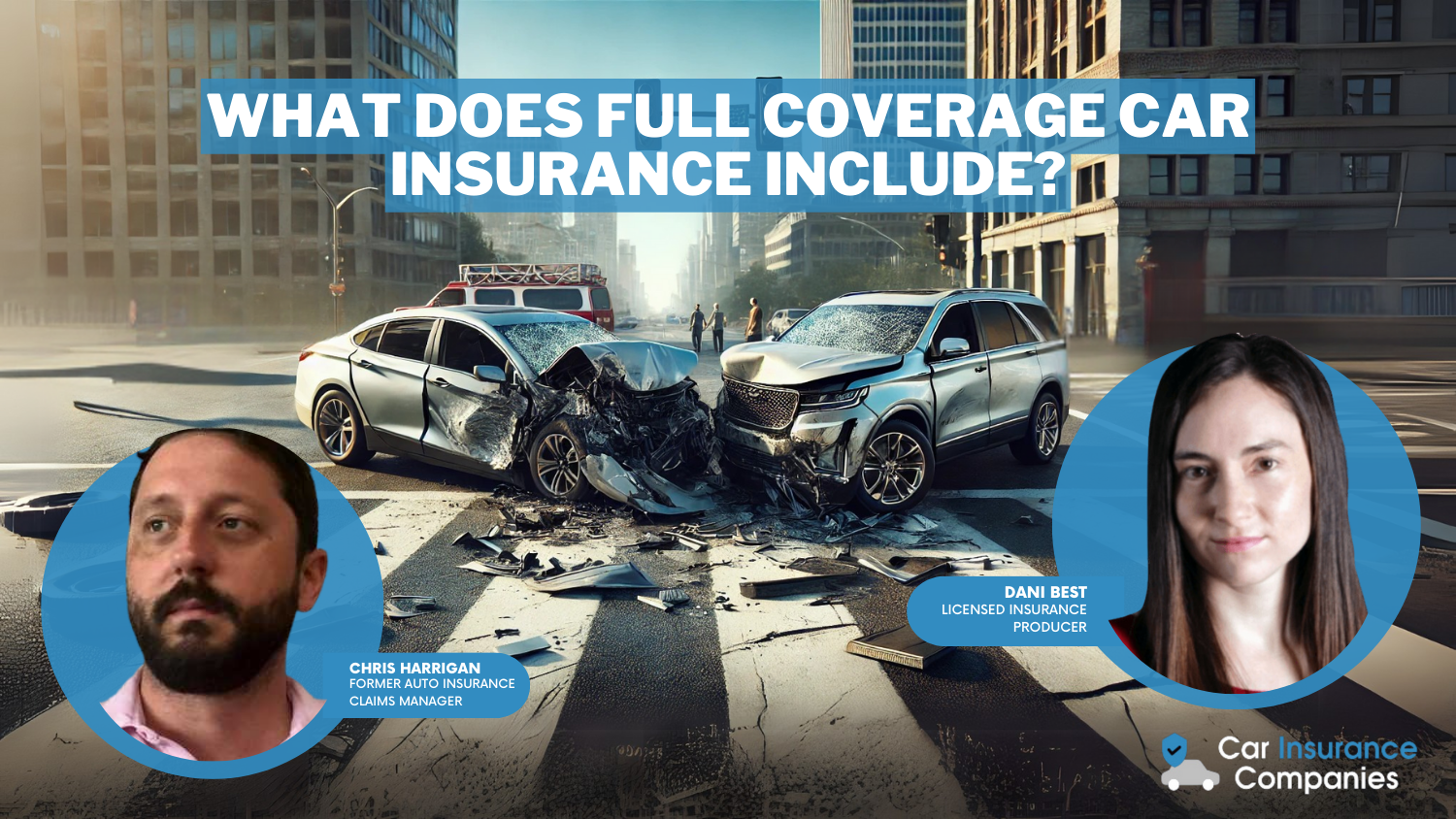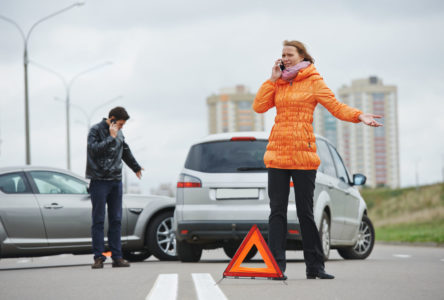What does full coverage car insurance include?
Full coverage car insurance includes so much more coverage than just basic insurance, so it does a much better job of protecting you, your car, and your passengers in the event of an accident or collision. Full coverage auto insurance includes collision and comprehensive coverage that protects against fire, vandalism, theft, and more. Scroll down to start comparing full coverage car insurance quotes for free.
Read more
Free Car Insurance Comparison
Compare Quotes From Top Companies and Save
Secured with SHA-256 Encryption
Dani Best
Licensed Insurance Producer
Dani Best has been a licensed insurance producer for nearly 10 years. Dani began her insurance career in a sales role with State Farm in 2014. During her time in sales, she graduated with her Bachelors in Psychology from Capella University and is currently earning her Masters in Marriage and Family Therapy. Since 2014, Dani has held and maintains licenses in Life, Disability, Property, and Casualt...
Licensed Insurance Producer
UPDATED: Nov 20, 2024
It’s all about you. We want to help you make the right car insurance coverage choices.
Advertiser Disclosure: We strive to help you make confident car insurance decisions. Comparison shopping should be easy. We are not affiliated with any one car insurance company and cannot guarantee quotes from any single company.
Our car insurance industry partnerships don’t influence our content. Our opinions are our own. To compare quotes from many different car insurance companies please enter your ZIP code on this page to use the free quote tool. The more quotes you compare, the more chances to save.
Editorial Guidelines: We are a free online resource for anyone interested in learning more about auto insurance. Our goal is to be an objective, third-party resource for everything auto insurance related. We update our site regularly, and all content is reviewed by auto insurance experts.
UPDATED: Nov 20, 2024
It’s all about you. We want to help you make the right car insurance coverage choices.
Advertiser Disclosure: We strive to help you make confident car insurance decisions. Comparison shopping should be easy. We are not affiliated with any one car insurance company and cannot guarantee quotes from any single company.
Our car insurance industry partnerships don’t influence our content. Our opinions are our own. To compare quotes from many different car insurance companies please enter your ZIP code on this page to use the free quote tool. The more quotes you compare, the more chances to save.
On This Page
Full coverage is generally the best way to go when it comes to car insurance. Full car insurance offers so much more coverage than just basic insurance, so it does a much better job of protecting you, your car, your assets, and your family.

Car insurance quotes for full coverage are available right here as soon as you place your ZIP code in the FREE quote tool above!
There are many ways to define full coverage, though not all options are necessary. However, the only instance where you don’t really need full coverage is when your vehicle has little value.
Then, the coverage will actually cost more than your vehicle is worth, making the coverage useless and truly not worth the cost.
- Full coverage is generally the best way to go when it comes to car insurance
- The only time that you are required to carry collision and comprehensive is when you have a car loan lien on your vehicle; your lender will require that you carry full coverage to protect the value of the car
- Another major danger that comprehensive coverage will pay for is theft
- Full coverage can also pay for those costs that you incur as part of an accident or loss, but are not part of repairs
Full Coverage Defined
Full coverage can be defined as anything other than basic, liability coverage. Liability coverage is only for payments for those that you cause damage to in an at-fault accident.
There is a gray area with coverage such as personal injury protection (PIP) and uninsured and underinsured motorist coverage, as some states require such coverage and others do not.
Full coverage generally refers to optional coverage like collision and comprehensive.
The only time that you are required to carry collision and comprehensive is when you have a car loan lien on your vehicle; your lender will require that you carry full coverage to protect the value of the car.
You can drop the coverage after your vehicle is paid for, but you have just put thousands of dollars into your vehicle. Your vehicle is now an asset, and you should still protect it by continuing full coverage.
If you want coverage that protects you against most of the dangers on the road, then you need to have full coverage.
Other options for repairing your vehicle are few to none, outside of paying for it yourself.
Few people have the funds to pay thousands of dollars for repairs or to replace a vehicle outright.
Full coverage like collision and comprehensive also includes a deductible, which is an amount that you set and which you are responsible for paying when you have a claim.
Deductibles are meant to encourage drivers to be more careful with their vehicle, knowing that they have a portion to pay if they need to put in a claim.
Increasing your deductible amount will lower the cost of your full coverage, though it will also mean that you will bear more of the burden for the cost of repairs.
Common deductible amounts include $250, $500, and $1,000. If you have $2,000 in damages and a $500 deductible, then your insurer will cover $1,500 of the costs.
Compare quotes from the top car insurance companies and save
Secured with SHA-256 Encryption
Vehicle Accident Repairs or Replacement
The first covered area is when you have an accident that you caused. In such an event, your basic insurance will pay the medical and repair bills of those you crashed into, but it will not cover any of your vehicle damages.
Collision, a part of full coverage, will pay to repair or replace your vehicle, less the amount of your deductible.
Collision will pay after an accident with another vehicle or an accident with an object, such as a telephone pole, fence, or road sign. An adjuster will calculate the costs of the damages and offer you a settlement for one of two amounts.
The first amount is the cost to repair your vehicle, minus your deductible.
The other settlement option occurs when the cost to repair your vehicle is more than your vehicle is worth. In that case, the insurance company will offer you a settlement for the fair market value of your vehicle, less the amount of your deductible.
The fair market price of your vehicle is only related to what your vehicle is worth in your area based on its age, mileage, and overall condition.
Damage from Other Means

Full coverage also protects the value of your vehicle beyond just damages from an accident. Comprehensive coverage pays for repairs or replacement, minus your deductible, when your vehicle is damaged by nature, by a vandal, or even if you hit a wild animal.
Damages from means other than an accident can be just as costly as an accident.
Hail, flooding, and fire can all leave your vehicle as a total loss; then your insurer will offer you a settlement price based on the vehicle’s fair market value, just like with damages from an accident.
Many people don’t have a savings account just to pay for damages from vandalism, falling branches, or hitting a wild animal. Losses from such events can be very costly.
If your vehicle is still operable despite the damage, it will still lower the overall value of your car and possibly compromise the safety of your vehicle.
While no one plans to be in a hail storm or to hit a deer, such events do occur.
Data collected by the U.S. Department of Transportation from the U.S., Canada, and other countries shows that damages from hitting a large animal such as a deer, elk, or moose can cost several thousand dollars.
Such a crash can also include injuries to humans, but not usually. Comprehensive will pay for damages sustained through many means, minus a deductible, such as from hitting an animal.
Compare quotes from the top car insurance companies and save Secured with SHA-256 Encryption
Theft
Another major danger that comprehensive coverage will pay for is theft. While theft rates are down, according to data from the Federal Bureau of Investigation, no one wants to be the owner of one of the hundreds of thousands of vehicles stolen every year.
Almost 800,000 vehicles were stolen in 2009 according to the FBI, and the average loss was equal to $6,505.
Without comprehensive coverage, your stolen vehicle will not be replaced except out of your own pocket.
Lenders will also not forgive your car loan just because your car was stolen, so you will be financially responsible for paying for a vehicle that has disappeared as well as trying to pay for its replacement.
Compare quotes from the top car insurance companies and save
Secured with SHA-256 Encryption
Uninsured Motorists
Full coverage can also help if your vehicle is hit by an uninsured motorist and you don’t have uninsured/underinsured motorist coverage. While it won’t pay for any injuries you may have incurred, collision will pay to repair or replace your vehicle, less your deductible.
Collision pays for damages to your vehicle no matter who was at fault. Without collision or uninsured/underinsured motorist coverage, your damages likely won’t get fixed unless you pay for them.
While you can usually try to recover losses from the uninsured driver, such drivers likely won’t have the money to pay for your damages. It could be years before you get your damages and repairs paid for.
While it may seem unfair that you should pay for insurance to cover your own liability and to protect against those who are not paying to cover their own liability, the easiest, least-stressful thing to do is to make sure that you have coverage.
Drivers without insurance are more common than you would think. According to data collected by the researchers at the Insurance Research Council, in the U.S. in 2009, one driver in every seven was without insurance coverage, or 13.8 percent of all drivers.
While some states enjoyed low overall rates, such as Maine and Massachusetts with only four percent, other states such as Mississippi and New Mexico had uninsured driver rates over 25 percent.
Additional Costs

Full coverage can also pay for those costs that you incur as part of an accident or loss, but are not part of repairs. Most major accidents require that you have your vehicle towed to a garage or repair shop, and towing can cost several hundred dollars.
Generally, you can buy roadside assistance or just towing as part of full coverage.
If you have roadside assistance through an auto club, such as AAA, it might also include towing. While you don’t need to buy double coverage, you should compare the costs and benefits of each package.
Make sure that your auto club doesn’t limit the miles they will tow your vehicle. Most basic services from an auto club will only tow your vehicle for seven miles before they begin to charge you.
Another cost associated with an accident or other loss is rental car reimbursement. Most people don’t have an extra vehicle they can rely on while their damaged car is being repaired or they are shopping for a new one.
There are options such as carpooling or using public transportation, but such options are not always realistic or available.
Renting a vehicle can cost well over $30 a day, even without additional rental insurance coverage. Furthermore, many car rental agencies will not rent a vehicle to drivers under 25 or those without a major credit card.
Rental car reimbursement costs very little when compared to how much money it can save you if you need to use the coverage.
Find full coverage on this page by inserting your ZIP code in the FREE quote tool below now!
Compare quotes from the top car insurance companies and save
Secured with SHA-256 Encryption
Dani Best
Licensed Insurance Producer
Dani Best has been a licensed insurance producer for nearly 10 years. Dani began her insurance career in a sales role with State Farm in 2014. During her time in sales, she graduated with her Bachelors in Psychology from Capella University and is currently earning her Masters in Marriage and Family Therapy. Since 2014, Dani has held and maintains licenses in Life, Disability, Property, and Casualt...
Licensed Insurance Producer
Editorial Guidelines: We are a free online resource for anyone interested in learning more about auto insurance. Our goal is to be an objective, third-party resource for everything auto insurance related. We update our site regularly, and all content is reviewed by auto insurance experts.